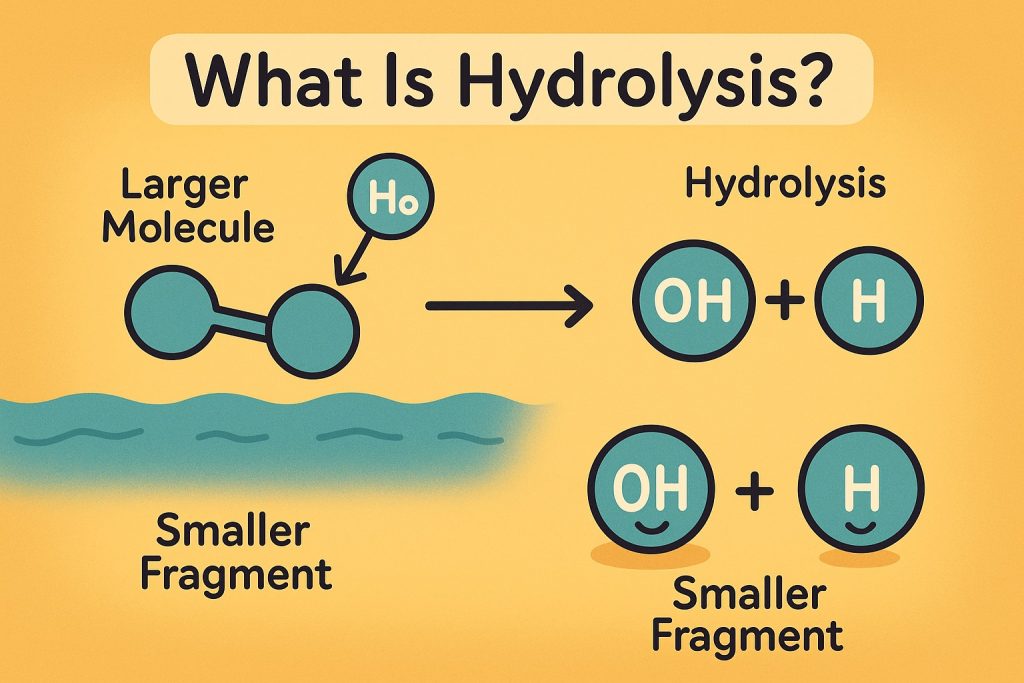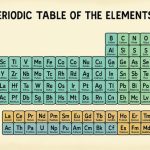Hydrolysis is a fundamental chemical reaction in which a molecule is split into two parts by the addition of water. This process is crucial in both nature and industry, playing a key role in digestion, cellular metabolism, and the breakdown of complex compounds. The term comes from Greek: hydro (water) and lysis (to break apart), emphasizing water’s role in breaking chemical bonds.
How Hydrolysis Works
In a typical hydrolysis reaction, a water molecule (H₂O) interacts with a larger molecule, causing it to split into two smaller units. One of the resulting fragments gains a hydrogen ion (H⁺), and the other gains a hydroxyl group (OH⁻). This reaction is essentially the reverse of a condensation reaction, where two molecules combine and release water.
There are different types of hydrolysis depending on the substance involved. For example, in the hydrolysis of esters, the reaction results in an alcohol and a carboxylic acid. In biological systems, hydrolysis is essential for breaking down polymers such as proteins, nucleic acids, and carbohydrates into their monomer components.
Biological Importance of Hydrolysis
Hydrolysis reactions are at the heart of many metabolic processes:
- Digestion: Enzymes in the stomach and intestines use hydrolysis to break down food into absorbable molecules (e.g., proteins into amino acids, starches into glucose).
- DNA and RNA: Nucleic acids are broken down into nucleotides through hydrolysis during cell recycling.
- ATP Hydrolysis: In cells, the breakdown of adenosine triphosphate (ATP) by hydrolysis releases energy used for muscle contraction, nerve impulse transmission, and chemical synthesis.
Without hydrolysis, life as we know it would not be able to process energy or nutrients.
Industrial and Chemical Applications
Hydrolysis is also widely used in chemical manufacturing and environmental science. Examples include:
- Soap production via saponification — the alkaline hydrolysis of fats and oils.
- Water treatment processes to break down pollutants.
- Pharmaceuticals, where hydrolysis affects drug stability and how substances are metabolized.
The controlled use of hydrolysis in industry allows for the breakdown or transformation of raw materials into usable products.
Hydrolysis vs. Other Reactions
It’s important to distinguish hydrolysis from similar reactions:
- Hydration adds water to a molecule without breaking it apart.
- Oxidation involves electron transfer, not necessarily involving water.
- Decomposition can occur through heat or light, while hydrolysis specifically requires water.
Hydrolysis is a unique, water-dependent reaction with a well-defined role in chemical and biological systems.
Glossary
- Hydrolysis: A chemical process where a molecule is split by the addition of water.
- Condensation reaction: A process where two molecules join and release water.
- Polymers: Large molecules composed of repeating subunits.
- Monomers: The building blocks of polymers, such as amino acids or sugars.
- ATP (Adenosine Triphosphate): The main energy currency of cells.
- Enzymes: Biological molecules that speed up chemical reactions like hydrolysis.


